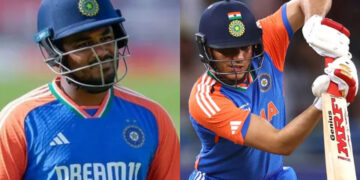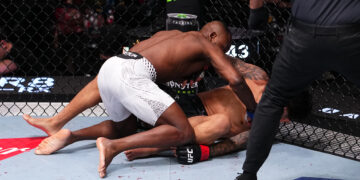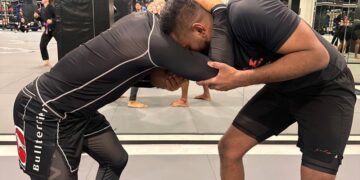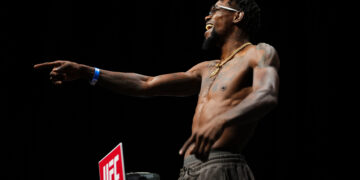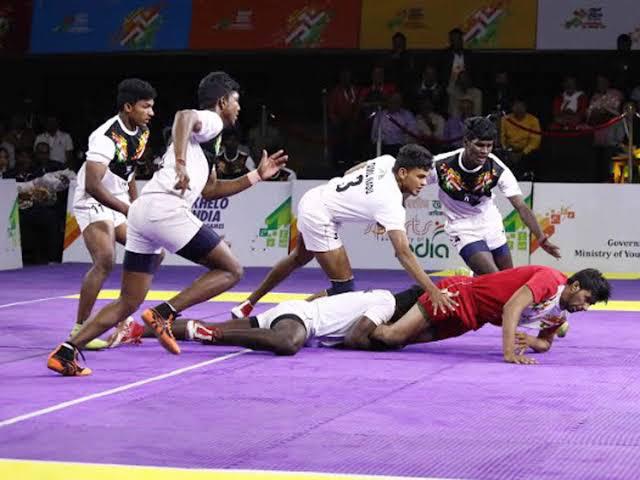Everyone has a natural fighting style. Some instinctively look to bombard opponents with volume, while others prefer a more cautious approach. Some people feel more comfortable throwing strikes at attackers, while others prefer to wrestle threats to the ground.
“Pressure” and “precision” are the two extreme ends of the fighting styles used in striking-based martial arts like Muay Thai, Kickboxing, and Boxing. Understanding which camp you fall into early in your fighting career will accelerate your skill development, allowing you to focus on the most important skills for your style.
Pressure Vs. Precision Fighting: Everything You Should Know
The pressure fighting style involves constant forward motions as you overwhelm your opponent with volume and force them into making mistakes. Once you get going, you become a human freight train that’s virtually impossible to stop, keeping opponents in defensive mode. Think Mike Tyson during his prime.
The precision fighting style is the opposite of the pressure style. It involves patiently waiting for openings that can be exploited with an accurate style. Precision fighters focus more on winning the cerebral aspects of a fight, using tools like feints, fakes, and traps to create openings. Think Floyd Mayweather during the second half of his career.
Neither style is inherently better than the other; each has its own pros and cons. For example, pressure fighters use more energy during fights, often pushing opponents’ cardio to their limits. Precision fighters are better at conserving energy and avoiding getting hit, but they’re more likely to lose close rounds since judges (and fans) aren’t always impressed with their low output.
The key to leveling up your striking game is to pick a fighting style that matches your natural tendencies. For example, if you naturally like to charge into battle and don’t mind trading blows, the pressure-fighter style would likely feel more natural for you.
The Pressure Fighter
Also known as in-fighters, pressure fighters don’t mind eating a few jabs to get in position to land powerful strikes. Pressure fighters thrive in the pocket, pressuring fighters until their guard crumbles.
Pressure fighters use their high-volume offense to reduce the risk of opponents landing counters. Not giving opponents any room to breathe also drains their gas tanks, especially if you’re making them backpedal most of the time. Pressure fighters are called Muay Bouk in Muay Thai, and the sports’ scoring system favors them.
Pressure fighters thrive on forward momentum, suffocating opponents with relentless strikes, takedowns, and clinch attempts. Pressure fighters don’t wait for the action; they create it. Think of Mike Tyson bobbing and weaving as he closes the distance and lands powerful hooks and uppercuts until their opponents crumble. That’s pressure fighting at its finest.
Traits Of A Pressure Fighter Include:
- Aggression comes naturally to you. You’d rather dictate the pace of a fight than react to an opponent.
- You have stamina for days. The pressure style won’t work for you if you gas easily.
- You enjoy mental warfare. Nothing makes you happier than seeing doubt creep into an opponent’s eyes.
Pros Of Using A Pressure Fighting Style Include:
- Forcing your opponents to stay on defense and wearing down their fighting spirit.
- Turns fights into attrition battles that favor combatants with excellent cardiovascular endurance.
- You control the pace and distance of the fight, giving opponents limited time to fight at their preferred range.
Some Of The Disadvantages Of Using An In-Fighting Style Include:
- Uses lots of energy. The style is best-suited for fighters with excellent cardio.
- There’s a high risk of eating hard counters on your way in.
- Requires taking more damage as compared to the precision style.
The Precision Fighter
If you prefer dancing on the edges of outside range, peppering opponents with jabs, and exploiting every mistake opponents make, you might be a precision fighter. Also called out-fighters, these fighters are often the most technically well-rounded, using their advanced understanding of angles, distance, and movements to land more strikes than opponents are able to land on them.
If pressure fighters are thunderstorms, precision fighters are like lightning. Impossible to predict when they’ll strike next, but when they do, it’s devastatingly powerful. The precision fighter is the strategist who waits for the perfect moment to land the perfect strike that changes a fight’s momentum. The style focuses on impact, not volume.
Watch the ending sequence of ONE Hall Of Famer, Demetrious Johnson’s second fight with Adriano Moraes, and pay attention to the fight-ending knee. Notice how long DJ held back the knee before throwing it? That’s precision fighting at its best. Johnson wasn’t worried about spamming knees; he patiently waited for a perfect opportunity to land a fight-ending knee.
Traits Of A Precision Fighter Include:
- Patience is your superpower. You’re okay playing the long game.
- Technique trumps brute force. Why throw ten punches when one well-placed strike does the job?
- You thrive under pressure (ironically). Countering aggressive opponents is your thing. You must be able to stay calm regardless of the volume your opponents throw at you. Watch Mayweather’s first fight against Maidana. Would you be able to deal with that type of pressure against an opponent who’s also fighting dirty?
Pros Of The Precision Fighting Style Include:
- Uses up less energy than the pressure style.
- Frustrates aggressive opponents, leading to more openings.
- Keeps the damage you absorb to a minimum, increasing the fight’s longevity.
- It’s the purest embodiment of what martial arts are meant to be: skill over brawn.
Some Drawbacks Associated With The Out-Fighting Style Include:
- You need excellent distance management, speed, and reflexes to be effective.
- Works best for fighters who can strike while backpaddling.
- Close rounds could end up going to busier opponents.
- Not exciting with casual fight fans who want action.
Figuring Out The Right Style For You: Four Questions To Ask Yourself
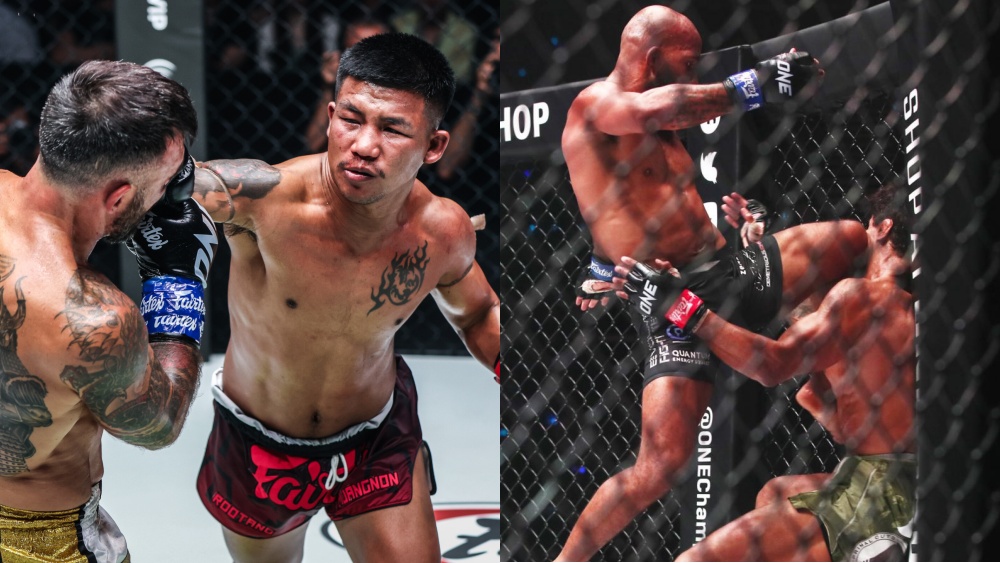
When it comes to pressure versus precision, it ultimately depends on your personal fighting style and preference.
Some questions to go over when choosing a fighting style to master include:
- What’s Your Workout Personality?: If you gravitate toward HIIT workouts, workout circuits, or marathon sparring sessions, you might be a natural pressure fighter. If you prefer activities like yoga, technical drills, or playing games like chess, a precision style might be a better fit.
- How Do You Handle Stress?: Pressure fighters create chaos. Precision fighters solve it.
- What’s Your Body Type?: Stocky build? Your low center of gravity could make you a clinching nightmare at inside range. Lean and quick? Use that reach to land strikes from outside range.
- Why Do You Train?: A pressure fighting style is more suited for self-defense, while precision fighting is more suited for competition.
Conclusion
Whether you thrive in chaos or prefer calculated precision, understanding your natural tendencies is key to unlocking your full potential in martial arts. Choosing a style that fits you—whether it’s pressure or precision—not only sharpens your strengths but also accelerates your growth. The sooner you lean into what suits you best, the faster you’ll develop confidence, skill, and strategy inside the ring.
You may also like:
How To Walk Down Opponents: Pressure Fighting 101
Ask any coach or seasoned fighter, and they’ll tell you the same thing: your punches are only as effective as your footwork. Most people think boxing is all about fast jabs and powerful knockouts. While…
Your environment significantly influences what works and what doesn’t in boxing. Even something that might seem insignificant to casual boxing fans, like the size of a boxing ring, influences which tactics work best. Smaller rings…
If you’ve ever watched a fight and thought, “Wow, this guy never backs off?” You’ve witnessed pressure fighting in action. Pressure fighting in martial arts is the art of making your opponent miserable with constant…
Hard sparring sessions in martial arts can make you feel like you’ve just walked through a brick wall. You’ve given it your all, and your muscles are sending you a strongly worded memo saying that…
Nothing feels as rewarding as landing a well-executed strike that finishes the match or secures a win. The knockout is the crème de la crème of combat sports like mixed martial arts (MMA), Muay Thai,…
Boxing is often referred to as “the sweet science” because it is more than just throwing punches. Boxing is about precision, timing, and strategy to scientifically defeat the opponent. While fundamental techniques are the core…
Every year, athletes embark on their Brazilian Jiu-Jitsu journey filled with hope to make their dreams come true and make history. With a month coming before the World IBJJF Jiu-Jitsu Championship 2025, grappling fans can’t…
Whether you’re hitting the heavy bags in Muay Thai, rolling hard in Brazilian Jiu-Jitsu (BJJ), sharpening your jab-cross combos in boxing or just hitting the gym for a quick workout, one thing’s for sure: your…
Gravity isn’t your friend when you’re defending against takedowns. It’s working alongside your opponent to get you on the ground. Fortunately, you also have an ally: the cage. The cages used in modern MMA are…
The back mount is the most dominant position in BJJ. It allows you to set up your attacks without your opponent peripherally seeing how you set them up. Because of this, opponents will rely on…
The countless chokes you learn in Brazilian Jiu-Jitsu are a massive part of what makes it such a fun martial art. While most BJJ techniques were developed to be performed on opponents wearing Gis, many…
Martial arts legends can inspire children—or anyone else—to dedicate themselves to learning more about these ancient arts. Children typically have short attention spans, but they’ll sit through exciting stories about warriors battling tigers with bare…



